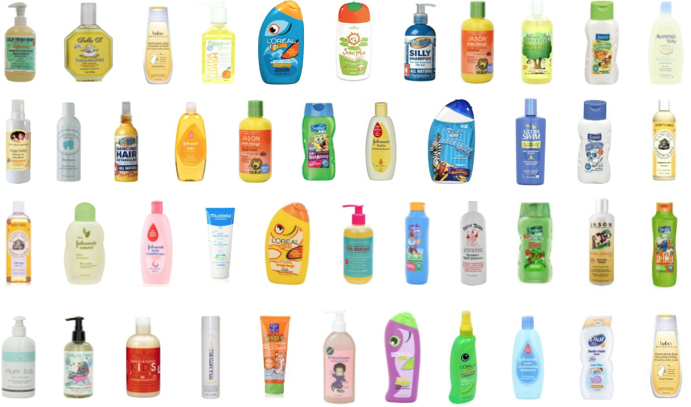I like to think that I know a little something about surviving a variety of world-ending scenarios. A childhood of computer games and films has left me prepared for zombie outbreaks, alien invasions and even a planet run by apes. One of the things I’ve learnt about surviving a catastrophe is that groups of things that look and act the same are generally something to be scared of.
A single zombie by itself? Not that scary – it’s a problem easily solved by a chainsaw to the back of the head. A sole alien? Not scary (unless you’re stuck on spaceship with little hope of rescue) – maybe the alien is even friendly and just wants to go home. An ape rides up on horseback holding a spear -- weird, but not that scary. On the other hand, a horde of zombies wandering towards your house is never good. Thousands of aliens falling from the sky rarely ends well. A hundred apes riding a hundred horses towards your gated community is going to make you wish you had built a taller gate.
Unfortunately, this sameness and the fear that goes with it isn’t something I just have to face in the cinema. I see it every time I go shopping. Let’s take a look in the children’s shampoo aisle:
A single zombie by itself? Not that scary – it’s a problem easily solved by a chainsaw to the back of the head. A sole alien? Not scary (unless you’re stuck on spaceship with little hope of rescue) – maybe the alien is even friendly and just wants to go home. An ape rides up on horseback holding a spear -- weird, but not that scary. On the other hand, a horde of zombies wandering towards your house is never good. Thousands of aliens falling from the sky rarely ends well. A hundred apes riding a hundred horses towards your gated community is going to make you wish you had built a taller gate.
Unfortunately, this sameness and the fear that goes with it isn’t something I just have to face in the cinema. I see it every time I go shopping. Let’s take a look in the children’s shampoo aisle:

All the products come in similar plastic bottles, all the same size. The shampoo is always dispensed by pumping or squeezing. They are all liquid-gels, and there are pastel colours for babies and primary colours for toddlers. Almost all of them have the words ‘gentle’ and ‘tear free’ tattooed on the bottles. While most people will see cute fish and cartoon characters when viewing our line-up of suspects, I see a zombie horde heading for disaster.
I’m not the only one who sees ghouls in the shopping aisles
A recent TNS study showed that 60% of new product launches in the UK are either ‘zombie’ products, products that fail to provide long-term growth, or ‘cannibal’ products, products that transfer consumers from one product in your portfolio to another.
As marketers, how do we avoid overseeing portfolios of zombies and cannibals? In a marketplace where there’s an abundance of similar products, both competitively and within our own portfolios, how can we create products that are geared towards new consumers and long-term growth?
The solution to this problem comes in two parts. The first part is better product development, which is the creation of innovative functions and experiences that differentiates a product from its peers. The second part is the creation of distinctive assets, such as a logo, messaging and colour that makes a product easy to recognise. How do we make consumers actually feel something for the one product trying to break out of the horde?
Today, we’re going to focus on the second part of the solution: how to create a distinctive product. How do you develop an easily recognizable logo, campaign or packaging for a product that remains true to the parent brand, is distinctive from other products within a portfolio and is appealing to customers?
In recent projects on cars and insurance products, we’ve been developing distinct personalities for different products in a portfolio. The personality metaphor is used frequently in brand development but is underutilized in product launches. There’s some evidence that developing distinctive product personalities can lead to increased customer preference. But, to some extent, that doesn’t matter at this stage. Don’t view the personality of a product as an end in itself but as a heuristic that will take us from the messy and complex interactions between product, brand, consumers and competitors to distinctive assets like packaging and colour we mentioned before.
The creation of a distinctive product personality is a balancing act between the different and the complementary.
On one hand, you want to develop a personality that is distinct from other products yet complements the personalities of consumers and the overarching brand.
We’ve found that one of the best ways to do this is through social media research. The web is a huge interconnected network of consumer thoughts and feelings, and if you figure out how different personality attributes fit together, or not, it’s a great place to start to develop potential product personalities.
Typically, we take the personality attributes of consumers, normally from a segmentation study; the personality of a brand (normally from the brand book, temple, onion, key or another lexicon used to articulate the brand archetype); and a selection of hypothetical product personality attributes for the products we want to investigate. This naturally occurring online data allows us to see if, when people talk about, say, “cute”, they associate “cute” with “cheerful” but never with “funny”. Layering exploratory network analysis with a qualitative interpretation yields rich, nuanced connections that can inspire the way you position a product.
An additional benefit of a content-rich approach like this is that it allows you to get a deeper understanding of the personality attributes you're investigating. For example, a brony is a different type of “cute” than that of a My Little Pony.
Once you’ve settled on the distinctive personality attributes for a product, you can start developing assets around them. For example, “cute” packaging may be more rounded than “reliable” packaging. Designers, in particular, are very good at this sort of reverse semiotics, or the creation of symbols from meaning, and planners find this a rich way to talk to creative teams about the subsequent advertising brief.
Creating distinctive product assets like this increases the availability of your product to consumers both mentally – it’s top-of-mind – and physically – it’s easy to pick out in the store. The key to surviving a zombie apocalypse of the marketing variety isn’t to hide in the undergrowth, but it’s to stand out there, loud and proud, with a confident personality.
Richard Shaw is VP and DigiVisionary and a member of the BrainJuicer Labs team. He is available to chat to you about mining social media for inspiration when you develop brand and product personality types, as well as zombies and other fearful things.
Read more from Brainjuicer in our Clubhouse.
